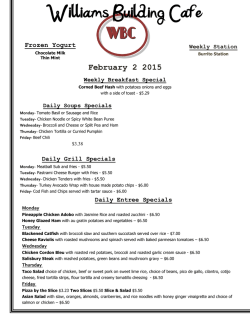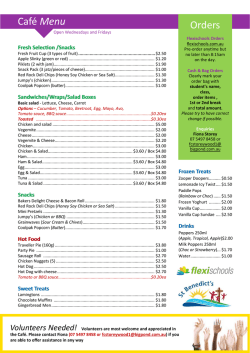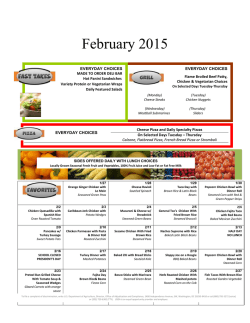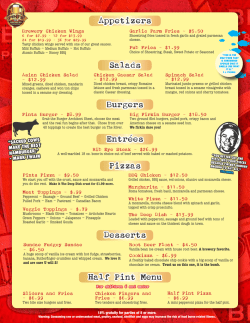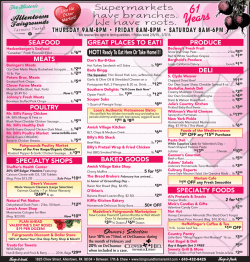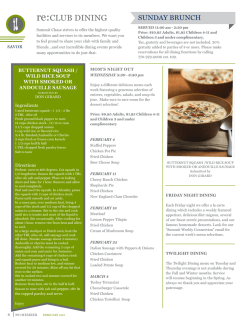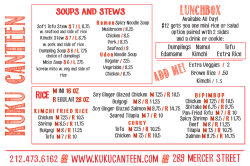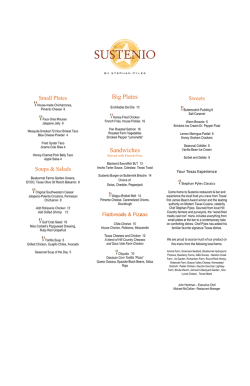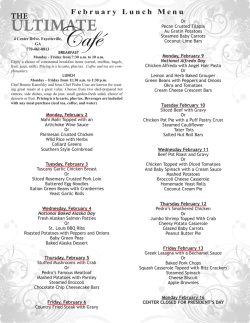
Break-even Analysis of Small-Scale Production of Pastured Organic
PNW 665 Break-even Analysis of Small-Scale Production of Pastured Organic Poultry Kathleen Painter, Elizabeth Myhre, Andy Bary, Craig Cogger, and Whitney Jemmett Introduction As consumer demand for locally produced, high quality foods expands, so do opportunities for small-scale agricultural enterprises—such as pastured poultry producers. The widespread growth in farmers’ markets across the nation has created better opportunities for smallscale producers to meet customers and evaluate local market demand for their products. People who buy organic poultry consider it to be more healthful and more flavorful, and a growing number of consumers support humanely raised protein sources (Laux 2012). Raising pastured poultry has relatively low entry costs, making it an appealing choice for smaller producers. Producers can charge more for poultry that is pastured, rather than raised in a traditional large confinement operation. However, they will need to know their production costs and what consumers are willing to pay in order to determine whether their enterprise will be profitable. This price analysis compared costs and returns for pastured organic broilers using two strains of Cornish Cross meat birds, the industry standard. The two strains were the standard Cornish Cross (CC), a hybrid meat breed developed for high feed efficiency and quick maturation, and the Slow Cornish Cross (CCS), a slower maturing, smaller strain that is better adapted to pastured production. Data from five years of trials conducted at Washington State University’s Research & Extension Center in Puyallup, Washington, were used to compare broiler production using chicken “tractors,” or movable pens. The chickens provided fertilizer for organic vegetable production at the site. For CC broilers, the break-even price that covers feed, labor, and land costs is $5.20 per pound, or $24.51 per average broiler (table 1 and appendix A). Given that the CCS broilers take longer to finish and are considerably smaller, a higher price of $7.87 per pound or $27.55 per average broiler is needed to break even (table 1 and appendix A). These results are based on assumed costs for purchasing day-old chicks, feed, slaughtering, labor, and land use, as detailed later in this bulletin and presented in table 2. Because these break-even prices are quite sensitive to the underlying cost assumptions, this publication includes budget spreadsheets which producers can use to enter their own costs to determine break-even prices for their conditions (appendix A). Table 1. Carcass weight, break-even price, and costs for Cornish Cross and Slow Cornish Cross broilers. Cornish Cross Slow Cornish Cross Average carcass weight of broiler (lb) Break-even price ($/lb) Total revenue ($/chicken) 4.71 $5.20 $24.51 3.50 $7.87 $27.55 Variable costs ($/chicken) Fixed costs ($/chicken) Total costs ($/chicken) $21.83 $2.68 $24.51 $24.95 $2.61 $27.55 $2.68 $0.00 $2.61 $0.00 Returns over variable costs ($/chicken) Returns over total costs ($/chicken) Contents Introduction...........................................................................1 Background: Going organic ................................................2 Cost assumptions.................................................................3 Meat chicken breeds............................................................4 Appendix A. Break-even enterprise budgets ...................5 Appendix B. Chicken tractor designs for pastured broiler production ..............................................................6 A Pacific Northwest Extension Publication University of Idaho • Oregon State University • Washington State University ganic label, certification is required from a third party, such as the state’s department of agriculture or, in Oregon, Oregon Tilth. Table 2. Cost data for organic broiler production, April 2014. Item Chicks, day old, Cornish Cross Chicks, day old, Slow Cornish Cross Shipping Grit Organic feed, starter Organic feed, grower Slaughter charges Land rent General labor Land use per 10’ x 10’ tractor Unit chick chick chick 50-lb bag 44-lb bag 44-lb bag chicken acre hour acre Price per unit $1.65 $1.80 $0.27 $10.99 $23.66 $22.24 $3.50 $280.00 $15.00 $0.125 Nearly 30.6 million organic broilers were produced in the United States in 2008 (USDA-NASS), including both certified and exempt (those from farms producing 1,000 birds per year or less). This number is approximately one-third of one percent of total U.S. broilers (measured at 8.91 billion in the 2007 Census of Agriculture). Farmers received an average price of $6.40 per organic broiler in 2008. Nearly two-thirds of the 2008 sales for U.S. organic broilers were in California, which had $129 million in sales, followed by Pennsylvania with $15 million and Iowa with $8.8 million (USDANASS). Of the total $195.8 million in organic broiler sales in 2008, 59 percent were from certified organic producers. The remaining sales were broilers from noncertified exempt producers (Greene 2013). The majority of broiler sales were at the wholesale level (81%), with direct-to-retail making up 13 percent of sales and direct-to-consumer sales comprising 6 percent (Greene 2013). Notes: Chick prices, including shipping, are based on Dunlap Hatchery's prices. This hatchery is located in Caldwell, Idaho. Feed prices are based on a quote from In Season Farms, May 2014. Price includes delivery if at least 25 bags are purchased. Background: Going organic Consumer demand for organic food has risen steadily since the U.S. Department of Agriculture established organic standards in 2002. Although the rate of growth slowed from 2007 to 2009, along with the U.S. economy, the overall demand for organic products has steadily grown (figure 1). In 2012, U.S. organic food sales were estimated at $28 billion (Greene 2013). Small-scale poultry production and processing as presented in this bulletin is quite expensive per bird relative to commercial organic production. The 2012 Census of Agriculture reported that U.S. broiler producers averaged 257,000 birds per operation in 2012 (USDA-NASS). A 2008 Organic Producers Survey reported 237 farm operations with organic broilers, of which 69 were exempt. The exempt farms averaged 72 birds per year, compared to 182,000 birds per year for the 168 certified organic producers. This publication is geared toward small-scale producers. The larger certified organic producers will have significant economies of scale compared to the smaller, exempt operations. Requirements for organic poultry production were created under the USDA’s 2002 regulations (Dimitri and Greene 2002). Under these rules, certified organic broilers must not receive antibiotics or growth-producing hormones. Sick animals must be treated, even if they will lose their organic status. Organic and non-organic animals must be raised separately. Feed must be 100 percent organic, without any animal byproducts. Animals must have access to the outdoors, shade, fresh air, and sunlight, suitable for each stage of production. Finally, manure must be managed properly to prevent contamination of soil, water, or crops. To use an or- Figure 1. Annual sales (in billions) and sales growth rate for U.S. organic food, 2004-2014*. (*2012-2014 values are estimates or projections.) 40 35 25 20 15 Sales growth (%) U.S. sales ($ billion) 30 10 5 0 Source: USDA, Economic Research Service, using data from Nutrition Business Journal. 2 are placed in the chicken tractor. Feed stores often use galvanized watering troughs with a few inches of sawdust and a heat lamp or two to house baby chicks. The chicks will probably be safe from vermin if a sturdy cover, such as ½-inch by 1-inch hardware cloth, is securely fastened on top of the trough. Cost assumptions Producers interested in raising pastured poultry for sale on a small scale will first need to estimate their costs of production so they can determine the consumer demand at that price. Also, customers will want to know the selling price per pound before committing to their purchase. Small-scale producers may also want to take orders and get deposits from their customers. Thus, it is helpful to accurately estimate costs before beginning production. One 10-foot by 10-foot chicken tractor or two 5-foot by 10-foot chicken tractors will be needed to house 75 broilers at the rate of 1.33 square feet per bird. The USDA does not currently regulate specific space requirements, but by the end of 2016 new regulations will require more space per bird in moveable pens1 (Riddle 2013). Plans and costs for a 10-foot by 10-foot tractor are included in appendix B. There are many different types and plans for chicken tractors, which must be moved regularly. This study’s design uses two permanent lawn mower-type wheels mounted on two adjacent corners plus a hand truck to move the tractor. Other methods include pulling the pen with a tractor or pickup, placing some type of skids on the bottom surface (old skis work well) and pulling it by hand, or using a hand truck without mounting wheels on the pen’s base. Our assumptions on feed usage, carcass weight, labor, and mortality are based on trials conducted as part of a larger organic vegetable production trial at the WSU Puyallup Research & Extension Center. Data for five years of CC production are compared to four years of CCS production as a basis for the estimates used in this bulletin. Each year, two batches of day-old chicks were purchased, 75 each of the standard Cornish Cross strain and the Slow Cornish Cross strain. This production guide uses actual costs and returns averaged over five seasons near Puyallup. Producers can use the spreadsheet version of the broiler budgets in order to enter their own cost estimates (appendix A). Lumber, wire, wheels, hardware, and a hand truck for the chicken tractor total $308, including 8 percent sales tax in Moscow, Idaho. The chicken tractor is assumed to have a five-year useful life, with a salvage value of $25, assuming the $60 hand truck would be worth $25 at the end of five years and the chicken tractor would have no salvage value. These assumptions result in an annual depreciation charge of $56.52. We use a 6 percent interest rate to calculate the annual interest of $9.98 on the tractor investment. Processing If they are fortunate to have small-scale processing facilities nearby, small producers may want to have a facility perform the killing and processing of their broilers. It may not be economically feasible for smallscale producers to invest in poultry processing equipment and facilities, particularly if they are just starting out. Alternatively, small producers may be able to get a size exemption from state regulations and process their chickens on the farm themselves. Estimating processing costs for a small-scale operation was beyond the scope of this study. Local processors typically charge from $3 to $3.50 per broiler, which is a fair estimate of the cost in terms of studying feasibility and market demand, so this study uses an estimate of $3.50 for processing costs. Land Typically, the chicken tractor is moved once a day after the chicks are placed in the field. If the chicks are placed outside at two weeks (this could happen a week or two later, depending on the weather), the tractors will need to be moved for six weeks (or 42 days) out of the eight-week maturation time for the CC broilers, and nine weeks (or 63 days) out of the 11 weeks needed for the CCS broilers. This sum is multiplied by the square footage of the chicken tractor, plus a 20 percent buffer for access, to calculate the minimum land area needed per tractor per breed. Shelter Chicks need to be kept in a draft-free, warm environment for several weeks. In this analysis we assume the chicks are placed under a small commercial brooder with a heat lamp for the first two to four weeks. The brooder could be placed inside the chicken tractor for extra security. Alternatively, chicks could be kept inside or in a sheltered area in a barn, such as in a large box, with a heat lamp. Depending on the weather, the chicks may still need access to a heat lamp after they Feeders and watering systems Feeders are assumed to cost $60 and a watering system is valued at $50. The feeders and watering system are assumed to have a five-year life, with no value at the end of five years. An interest rate of 6 percent is used 1 New recommendations for housing broilers in outdoor mobile pens at the rate of 2 square feet per bird will be required by December 2016. In addition, 50 percent vegetative cover must be provided. 3 to calculate the annual charge on these multi-year investments. The total depreciation charge for the brooders, feeders, and waterers is $47 per year. The annual interest charge is $28.30. Table 3. Feed conversion, age at slaughter, and mortality rates by breed. Feed In our trials, the CC broilers had an average carcass weight of 4.71 pounds at 8.17 weeks, compared to the CCS broilers’ average weight of 3.50 pounds at 11 weeks (table 3). For the CC chickens, feed conversion averaged 3.71 pounds of feed per pound of processed carcass weight over five years. The CCS chickens required 47 percent more feed, on average, over four years of trials. They averaged 5.51 pounds of feed per pound of finished meat. Producers may wish to increase the carcass weight for CCS by waiting to butcher until the birds are slightly heavier. Cornish Cross Slow Cornish Cross Average feed consumption (lb/chicken) Average weight of broiler, final product (lb/chicken) Feed conversion (lb feed/lb broiler) 17.47 19.30 4.71 3.71 3.50 5.51 Age at slaughter (weeks) Mortality rate 8.17 12.00% 11.00 6.67% CC. The higher mortality rate of the CC in free range or pasturing systems, compared to confinement production, is also unappealing. The CCS breed is still a hybrid bred for meat production, but with fewer leg, heart, and heat sensitivity problems. However, CCS broilers take longer to finish and will not attain the same size as the standard CC broilers. The slow CC breeds are more similar to traditional meat birds in terms of foraging, cleanliness, and feathering. If consumers are visiting the farm where the birds are being raised, they may prefer to see a more attractive, natural looking bird rather than the standard CC birds, which have been bred to be disproportionately wide and heavy in the breast to the point that the birds have an unnatural shape and gait. Organic feed price information is based on 2014 retail prices for organic grower and starter from In Season Farms, a supplier of certified organic feeds based in British Columbia, Canada, with delivery available to Washington and Oregon (see Feed Resources). The price for organic broiler starter feed was quoted at $23.66 per 44-pound bag, or $0.54 per pound. The organic grower feed was slightly less expensive at $22.24 per 44-pound bag, or $0.51 per pound. Locally available Purina products averaged about 30 percent higher prices than this Canadian source, which would increase total costs considerably. Over the course of this five-year experiment, organic feed prices increased by about 30 percent, from $12.95 per 40-pound bag in 2005 to $16.95 per 40-pound bag in 2009. Producers will need to locate an organic feed supply that costs less than the Purina brand available locally in order to keep breakeven prices from increasing above the levels in this bulletin, particularly those producers who want to raise slower-maturing meat birds. In this study, the CCS had lower mortality rates than the CC, averaging 6.67 percent over four years of trials, and ranging from 1 percent to 19 percent. Mortality rates for the CC averaged 12 percent over five years, and ranged from 4 percent to 22 percent (table 3). The CCS broilers cost more to produce and weigh 25 percent less. If producers and consumers want alternatives to the highly efficient CC breed, they need to know that the resulting meat will be more costly per pound. Consumers report that meat from slower-maturing breeds has more flavor and a firmer texture, particularly for other dual-purpose breeds that take much longer to grow to the broiler stage (Fanatico and Born 2002). Meat chicken breeds The commercial Cornish Cross meat chicken (broiler) resulted from crossing a standard-bred New Hampshire with a standard-bred Dark Cornish chicken, which was introduced in 1948 in the Chicken of Tomorrow documentary. In the 1950s, these crosses were again crossed with the standard-bred Plymouth Rock to incorporate white feathering. This cross has been genetically refined for feed efficiency, rapid growth, and broad breasts, among other traits for confinement production. However, the CC is not well suited for pastured production because of problems with weak legs, heart attacks, poor foraging ability, and poor heat tolerance (Fanatico 2010). While producers may be interested in finding alternative meat birds that are better for pastured production, alternative meat breeds typically lack the feed efficiency and fast-finishing qualities of the Taste tests would be useful for introducing consumers and other potential customers such as local chefs to pastured poultry. While many consumers might balk at the high prices that small-scale producers need to charge in order to break even, chefs may be more interested in a unique local offering and less concerned with price. 4 Appendix A. Break-even enterprise budgets Table A1. Break-even enterprise budget for Cornish Cross chickens, assuming a 75-bird batch raised in movable pens. Item Income Slaughtered chickens Operating costs Chicks Shipping on chicks Feed: Starter Feed: Grower Chick and hen grit General labor (hours per bird) Slaughter charge Supplies (bags, ties, cleaning supplies) Bedding for brooder Utilities Quantity per chicken Price or cost/unit ($) Unit 4.71 lb 1.00 1.00 3.34 14.13 3.00 0.34 1.00 1.00 1.00 1.00 chick chick lb lb lb hour chicken batch batch batch ac/tractor Value or cost/lb ($) 1617.42 1617.42 24.51 24.51 5.20 5.20 1.65 0.27 0.54 0.51 0.22 15.00 3.50 50.00 20.00 40.00 108.90 20.25 118.54 471.38 43.96 336.60 231.00 50.00 20.00 40.00 1.65 0.31 1.80 7.14 0.67 5.10 3.50 0.76 0.30 0.61 0.35 0.07 0.38 1.52 0.14 1.08 0.74 0.16 0.06 0.13 1440.62 21.83 4.63 176.79 2.68 0.57 176.79 47.00 56.52 28.30 9.98 35.00 2.68 0.71 0.86 0.43 0.15 0.53 0.57 0.15 0.18 0.09 0.03 0.11 1617.42 24.51 5.20 $0.00 $0.00 $0.00 Net returns above variable costs 0.125 Value or cost/chicken ($) 5.20 Total operating costs Fixed costs Depreciation on brooders, feeders, waterers Chicken tractor depreciation Interest on brooders, feeders, waterers Chicken tractor interest Pasture Total value or cost ($) 280.00 Total costs (operating and fixed) Net returns above total costs Note: Values reflect this study's 12% average mortality rate for Cornish Cross broilers. Table A2. Break-even enterprise budget for Slow Cornish Cross chickens, assuming a 75-bird batch raised in movable pens. Quantity Item Income: Slaughtered chickens Operating costs: Chicks Shipping on chicks Feed: Starter Feed: Grower Chick and hen grit General labor (hours per bird) Slaughter charge Supplies (bags, ties, cleaning supplies) Bedding for brooder Utilities Price or per chicken Unit 3.50 lb 1.00 1.00 2.13 17.17 3.50 0.47 1.00 1.00 1.00 1.00 chick chick lb lb lb hour chicken batch batch batch cost/unit ($) ac/tractor 1.80 0.27 0.54 0.51 0.22 15.00 3.50 50.00 20.00 40.00 135.00 20.25 80.18 607.51 54.95 493.50 245.00 50.00 20.00 40.00 1.93 0.29 1.15 8.68 0.79 7.05 3.50 0.71 0.29 0.57 0.55 0.08 0.33 2.48 0.22 2.01 1.00 0.20 0.08 0.16 1746.38 24.95 7.13 182.39 2.61 0.74 182.39 47.00 56.52 28.30 9.98 40.60 2.61 0.67 0.81 0.40 0.14 0.58 0.74 0.19 0.23 0.12 0.04 0.17 1928.78 27.55 7.87 $0.00 $0.00 $0.00 280.00 Total costs (operating and fixed) Net returns above total costs Note: Values reflect this study's 6.67% average mortality rate for Slow Cornish Cross broilers. 5 Value or cost/lb ($) 7.87 7.87 7.87 Net returns above variable costs 0.145 Value or cost/chicken ($) 27.55 27.55 or cost ($) 1928.78 1928.78 Total operating costs Fixed costs: Depreciation on brooders, feeders, waterers Chicken tractor depreciation Interest on brooders, feeders, waterers Chicken tractor interest Pasture Total value Appendix B. Chicken tractor designs for pastured broiler production Designs for chicken tractors can be found online and in books. The following design by Zach Marlow is used to estimate costs of production for this publication and provide a guide to construction (greenthumbfarming. com/chicken-tractor-for-meat-chickens, accessed July 2014). Materials Space requirements This design creates a pen that is 10 feet square and 2 feet high, or 100 square feet (figure B1). This size allows 1.33 square feet per broiler for batches of 75 birds, which is larger than the minimum size of approximately one square foot per bird required by France’s esteemed Label Rouge (see sidebar). Joel Salatin’s pastured poultry system using chicken tractors employs 8-foot by 10-foot tractors housing about 80 chickens (Salatin 1996). Pens constructed for the Puyallup Research & Extension project were 5 feet by 10 feet; these were easier to move and manipulate on the research plots. Larger pens may require a motorized vehicle to move. 12 4 1 4 1 1 2 1 2 1 8 4 1 Price Total $4.17 $3.33 $26.99 $20.00 $5.00 $5.00 $4.00 $3.50 $13.95 $2.29 $0.27 $0.30 $60.00 $50.04 $13.32 $26.99 $80.00 $5.00 $5.00 $8.00 $3.50 $27.90 $2.29 $2.16 $1.20 $60.00 $285.40 $22.83 $308.23 8.00% 1-inch x 4-inch x 8-foot boards, 4 total • 1¼-inch screws, approximately 1 pound • 24-inch-wide chicken wire with openings no bigger than 2 x 3 inches, 50 feet. (A 50-foot roll of 24-inchwide hardware cloth may be substituted if a stronger covering is needed for protection from predators.) Label Rouge (Red Label) is an accreditation that the French government gives to specific products in order to preserve, defend, and ensure a high level of quality. The Label Rouge poultry production system requires producers to keep lower bird densities in chicken houses, allow access to pasture, reduce routine medications, and raise the birds to 12 weeks. Table B1. Cost estimate for a 10 x 10-foot chicken tractor. Quantity • France’s Label Rouge poultry Some free-range systems use shelters that are moved on skids around an enclosed pasture. The birds return to the shelters at night (Beck-Chenoweth 2006). This method can reduce daily chores associated with moving chicken tractors and feeding and watering the birds in pens. The shelters are moved to a new location within the pasture as needed to distribute manure and foraging. 1 x 4 x 10' lumber 1 x 4 x 8' lumber 50' roll of 24" chicken wire 10' x 26" tin roofing 1¼" screws (pound) Staples (box) Hinges Latch Wheels ½-inch threaded rod, 1 foot Washers for the ½-inch threaded rod Nuts for the ½-inch threaded rod Hand truck Subtotal Sales tax (8%) Total 1-inch x 4-inch x 10-foot boards, 12 total Figure B1. Chicken tractor design with recycled tin roofing In addition to the pens, electric chicken netting is advisable to deter potential predators and to potentially create a larger area for the birds to range outside the tractors. Item • The Label Rouge chicken breed is quite different from the Cornish Cross breed predominant in the United States, with smaller breasts and a more traditional bird shape. The carcasses are air chilled rather than chilled in a coldwater bath containing chlorine disinfectant. The lifespan of Label Rouge chickens is 50 percent longer than the typical lifespan for Cornish Cross chickens. Taste testing is routinely carried out on Label Rouge poultry, which became popular in the mid-1960s and now comprises onethird of poultry purchases in France. For more information on this system, see Label Rouge: PastureBased Poultry Production in France online at http://attra.ncat.org/attra-pub/viewhtml.php?id=224. Source: Moscow Building Supply, Moscow, Idaho, April 2014 6 • Tin, corrugated plastic sheets, or heavy-duty tarps to cover about half of tractor. (Note that if you use tarps, you’ll need an additional 50 feet of chicken wire or hardware cloth to place beneath the tarp on the sides and top of the pen.) • Hinges and latch • Staples • 5-inch by 1½-inch rubber wheel, 2 total • ½-inch by 12-inch zinc-plated steel threaded rod, 1 total • Washers for the ½-inch rod, 8 • ½-inch nuts for the rod, 4 • Hand truck 11 Cover the rest of the top opening with an approximately 4-foot-wide section of wire and a 4-footwide section of roofing material such as tin (shown) or plastic. 12 Use metal, plastic roofing, or heavy tarp material to cover the sides on about half of the tractor in order to create an enclosed section for protection from the elements, as shown in figure B1. 13 For the wheels, drill ½-inch holes in the base of the chicken tractor approximately 2 inches from the ground, as shown in figure B3. The wheel must operate with the tractor as low to the ground as possible, so plan accordingly. 14 Cut the 12-inch threaded rod into two 6-inch lengths using a hacksaw or grinder. 15 Attach one washer and nut to one end of each rod, and slide it into place from the inside of the tractor. 16 Place two washers on the rod extending outward from the tractor, then place the wheel on the rod, followed by another washer and nut (figure B3). The cost for the chicken tractor materials and the hand truck is $308.23, based on the estimate in table B1. Construction 1 Lay out four 10-foot boards to make a square, and fasten at each corner (figure B2). 2 Cut two of the 8-foot boards into four 2-foot-long sections (for a total of eight), using a cutting angle of 45 degrees across each board so that each section will lie flat across the inside of the square for bracing, as shown in figure B2. 3 Attach four of the 2-foot boards to the inside corners, level with the bottom of the square to create a brace, and screw securely. 4 Create an identical square with braces for the top. 5 Cut another 8-foot board into four 2-foot pieces for the side supports and attach one to each corner of the square. 6 Invert the square with side supports and place it inside the other square and attach. 7 Use the 2-foot-wide wire to wrap around the sides and staple in place. If you are using tin for the roof and part of the sides, you do not need to use wire under the tin. 8 Attach a 10-foot board across the top of the frame about 2 feet from the end of one side of the square as shown in figure B2 to support a door. 9 Make a 2-foot by 10-foot rectangle for the door and cover it with wire, then staple the wire securely to the frame. Use hinges to mount the door to the 10foot board across the top of the cage and attach latch. 10 Attach the final 10-foot board across the top of the frame about 4 feet from other end, opposite door, for securing roofing material. Source: Adapted from http://greenthumbfarming.com/chicken-tractor-formeat-chickens, accessed July 2014. Figure B2. Constructing a simple 10-foot x 10-foot chicken tractor Figure B3. Chicken tractor design with wheels, hand truck, and tarp cover (in place of tin roofing) 7 References Feed Resources Beck-Chenoweth, Herman. Free-Range Poultry Production and Marketing Manual. Back 40 Books (now Back 40 General Store), 1997, http://shop.b40gs.com/Free-RangePoultry-Production-and-Marketing-Manual-978091877904 5.htm or visit http://free-rangepoultry.com. • In Season Farms, 27831 Huntingdon Rd., Abbotsford, BC V4X 1B6, Canada http://inseasonfarms.wordpress.com, 604-857-5781. Certified organic feed for poultry, hogs, dairy, sheep, goats, and horses. Delivery available to Washington and Oregon as well as British Columbia, Canada, in 44-lb bags, 308-lb barrels, or metric ton totes. • Scratch and Peck, 1645 Jill’s Court, Suite 105, Bellingham, WA 98226, scratchandpeck.com, 360-3187585. Certified organic feed for chickens, turkeys, pigs, and goats. This feed is also distributed through Azure Standard, azurestandard.com. • Organic feed may also be available through your local feed company from standard suppliers including Purina, CHS (Payback line), and Albers. Beck-Chenoweth, Herman. An Introduction to Grass-Based Chicken & Turkey Production & Marketing. An overview of raising chickens from a case study of a large Amish Farm. Information covers field production, processing, and marketing. Available on DVD or as a download from Back 40 General Store, 2006, http://shop.b40gs.com/Intro-to-Grass-Based-ChickenTurkey-Production-Download-PVPD2001DL.htm. Dimitri, C., and C. Greene. Recent Growth Patterns in the U.S. Organic Foods Market. Agriculture Information Bulletin, No. 777. Washington, D.C.: USDA-ERS, 2002. Fanatico, Anne. Meat Chicken Breeds for Pastured Production. Updated by Betsy Conner. ATTRA, National Sustainable Agriculture Information Service, 2010, http://www.attra.ncat.org. Fanatico, Anne, and Holly Born. Label Rouge: Pasture-Based Poultry Production in France. ATTRA, National Sustainable Agriculture Information Service, 2002. http://cecentralsierra.ucanr.org/files/122130.pdf. Greene, Catherine. Growth Patterns in the U.S. Organic Industry. Amber Waves, Oct. 2013. http://www.ers.usda.gov/amber-waves/2013october/growth-patterns-in-the-us-organic-industry.aspx# .U2f-51dfCjw. Laux, Marsha. Pastured Poultry Profile (revised). Agricultural Marketing Resource Center, Iowa State University, 2012, http://www.agmrc.org/commodities__products/livestock/ poultry/pastured-poultry-profile. About the Authors: Kathleen Painter is an Extension agricultural economist at the University of Idaho; Elizabeth Myhre is a research technician, Andy Bary is a senior scientific assistant, and Craig Cogger is an Extension soil scientist, all at Washington State University Puyallup Research & Extension Center; and Whitney Jemmett is a research associate at the University of Idaho. Riddle, Jim. Requirements for Organic Poultry Production. eOrganic Extension Community. http://www.extension.org/pages/69041/requirements-fororganic-poultry-production#.VDRXYha-5xU. Salatin, Joel. Pastured Poultry Profits. Polyface, 1996. Published and distributed in furtherance of the Acts of Congess of May 8 and June 30, 1914, by University of Idaho Extension, the Oregon State University Extension Service, Washington State University Extension, and the U.S. Department of Agriculture cooperating. Published January 2015 © 2015 by the University of Idaho 8
© Copyright 2025
